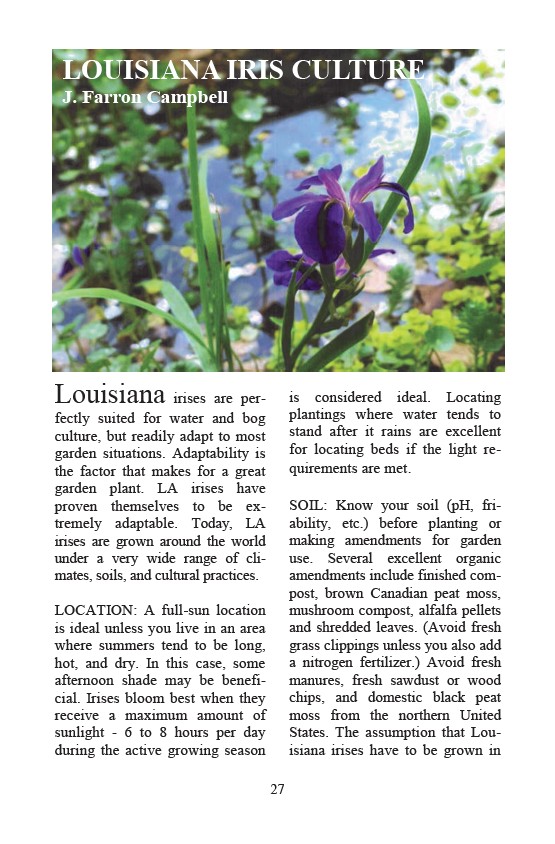
LOUISIANA IRIS CULTURE
J. Farron Campbell
27
Louisiana irises are per-fectly
suited for water and bog
culture, but readily adapt to most
garden situations. Adaptability is
the factor that makes for a great
garden plant. LA irises have
proven themselves to be ex-tremely
adaptable. Today, LA
irises are grown around the world
under a very wide range of cli-mates,
soils, and cultural practices.
LOCATION: A full-sun location
is ideal unless you live in an area
where summers tend to be long,
hot, and dry. In this case, some
afternoon shade may be benefi-cial.
Irises bloom best when they
receive a maximum amount of
sunlight - 6 to 8 hours per day
during the active growing season
is considered ideal. Locating
plantings where water tends to
stand after it rains are excellent
for locating beds if the light re-quirements
are met.
SOIL: Know your soil (pH, fri-ability,
etc.) before planting or
making amendments for garden
use. Several excellent organic
amendments include finished com-post,
brown Canadian peat moss,
mushroom compost, alfalfa pellets
and shredded leaves. (Avoid fresh
grass clippings unless you also add
a nitrogen fertilizer.) Avoid fresh
manures, fresh sawdust or wood
chips, and domestic black peat
moss from the northern United
States. The assumption that Lou-isiana
irises have to be grown in